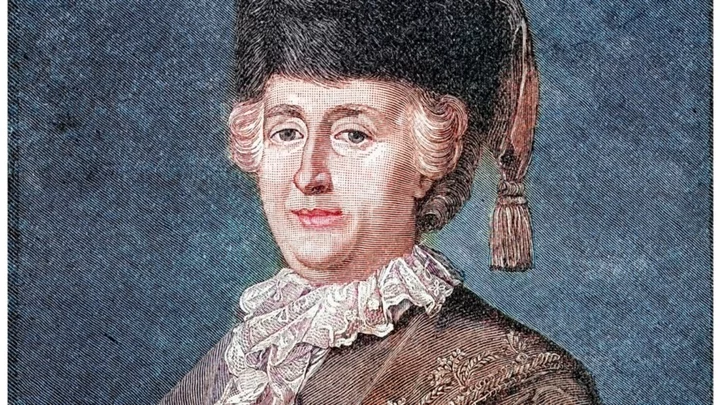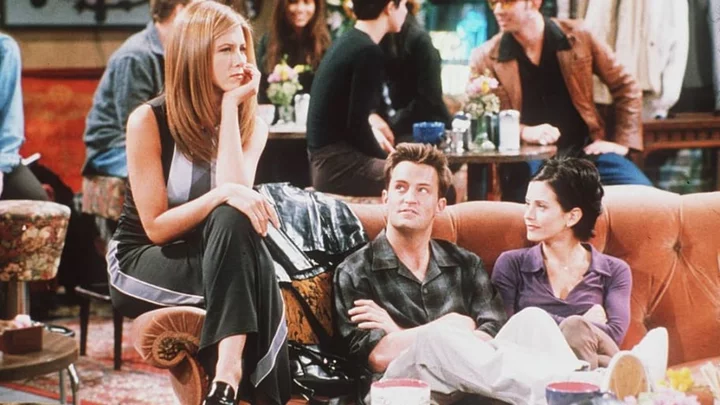For centuries, Catherine the Great’s reputation was more associated with scandalous rumors about her personal life than with her contributions to her country. But from arts and education to coups and annexations, there’s no doubt that Catherine did more than history gives her credit for. Here are just a few of the ways this “enlightened despot”—a German-born princess who came to power by overthrowing her husband—changed Russia forever.
Season 3 of The Great sees Catherine, played by Elle Fanning, and Peter, played by Nicholas Hoult attempt to make their marriage work after some seemingly insurmountable problems.
1. Catherine the Great helped westernize Russia.
Although the westernization of Russia really started with Peter the Great, Catherine actively tried to bring more Western culture and ideas to Russia to overcome its reputation as barbaric and behind the rest of the world. She loved philosophy and became close friends with Diderot and Voltaire (the latter of whom helped to reform her image in Europe).
Through her own love of art, she would expose Russians to a wide variety of masterpieces from artists around the world (more on that below). But she also gave the world Russian artists by paying to send the top students at the Academy of Art to study in countries in Europe.
Other cultural contributions included commissioning Russia’s first state library, neoclassical buildings in St. Petersburg, replicas of Raphael’s Vatican City loggias, and The Bronze Horseman, a monument to her predecessor, Peter the Great.
But she didn’t stop at the arts. Catherine also kept a close eye on Western agriculture and brought its techniques to Russia through the Free Economic Society, a scientific organization tasked with modernizing Russia’s approach.
In fact, Catherine’s love of culture and modernization is part of what earned her the title “The Great.” In 1764, Catherine penned a law code called the Nakaz (“Instruction”) that borrowed heavily from Enlightenment philosophers Voltaire (who wrote about religion and separation of church and state, among other things), Montesquieu (government), and Beccaria (criminal law). She gathered a commission comprising nobility, townspeople, and peasants to discuss and potentially take action on the Nakaz. They were so moved by their inclusion that their first order of business was to bestow a title upon her—“The Great.” It’s said Catherine was pleased that it took her just five years of rule to achieve the honorific when Peter the Great took four decades to earn it.
2. She founded what is now considered one of the most important art collections in the world.
The second-largest museum in the world by gallery space, the Hermitage Museum in St. Petersburg, Russia, was started from Catherine’s private collection in 1764. She eventually acquired more than 4000 paintings in addition to sculptures and automatons, but Catherine’s first purchase was a 200-piece collection assembled for Frederick II of Prussia. He had declined to purchase it due to economic hardships in Prussia at the time, so Catherine swooped in to acquire the pieces, which included a few Rembrandts and a Rubens. She quickly became hooked on buying small collections, later describing herself as “gluttonous” when it came to art acquisitions.
By 1771, her museum had outgrown the “Small Hermitage” she had built for it next to the Winter Garden Palace, so she commissioned a three-story building deemed “the Great Hermitage.” An extension was added in 1792. In 1852, nearly 60 years after Catherine’s death, the Hermitage Museum opened to the public. Today, the five-building museum houses more than 3 million artifacts and works of art, some going all the way back to the Stone Age.
3. Catherine the Great reformed education in Russia.
When Catherine became empress, education was inconsistent, unreliable, and [only] exclusively available for those who could afford it. Schools in the countryside were run by local priests, and even those were few and far between. There were also very few education options available for women: They could be educated, but it depended entirely on their parents’ willingness, ideals, and financial situations.
Catherine advocated for equality in education and felt that the more educated women were, the better society would be. She was also insistent that the state run schools, not the church—a revolutionary idea for the time.
In 1764, she established the first educational institution for women, the Smolny Institute for Noble Maidens, in St. Petersburg. She followed up with 20 more institutes for girls who weren’t as well-off, providing more women with more opportunities than ever before.
4. She popularized inoculation against disease in Russia.
In the late 1780s, Catherine was extremely concerned about a wave of smallpox sweeping across Russia. When a member of the nobility died from the disease, Catherine opted to have herself and her son inoculated. The procedure involved removing pustules from a smallpox patient and placing them under the skin of a healthy person. The ensuing mild symptoms would trigger the development of antibodies.
It was risky—2 percent of people died from this method—but Catherine (who had long feared the illness) recognized that it was her best option. She also knew that her decision would influence her subjects. “Should I remain in real danger, together with thousands of people, throughout my life, or should I prefer a lesser danger, a very brief one, and so save many people? I thought that by choosing the latter, I was selecting the best course,” she wrote in a letter to the king of Prussia.
While the idea of inoculation may not have taken off quite as she had hoped—Russians remained skeptical of the practice—she did help the concept become more accepted, especially among other nobles, who treated inoculation as a fashionable thing to do.
5. Catherine the Great expanded Russia.
Under Catherine’s rule, Russia expanded by 200,000 square miles. Of course, not all of those miles were obtained from their occupants willingly or peacefully—see the annexation of Poland, Lithuania, Ukraine, and more—but there’s no doubt that Russia grew while Catherine reigned.
Catherine was especially determined to expand Russia south toward the Black Sea, and as part of that plan, she formally annexed Crimea in 1783. Far from simply staking a flag on more land, this annexation meant that Russia could establish a military presence on the Black Sea and inch closer to the Bosporus Strait, which eventually leads to the Mediterranean. Controlling these waterways would allow Russia more control and influence, which is why it remains an important issue to Russia today.
In addition to the expansion, Catherine also established more than 100 cities, while older towns were shown some love with fortification and renovation.
The third season of Lionsgate+ Original Series, the popular satirical comedy “The Great”, premieres on Friday, 14 July. New episodes will stream every Friday, and Season 1 and Season 2 are currently available on LIONSGATE+.
This article was originally published on www.mentalfloss.com as 5 Ways Catherine the Great Changed Russia.









